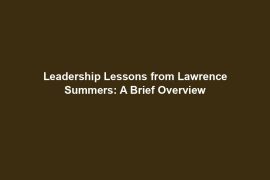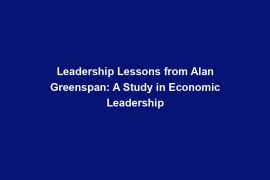Hey there, history buffs and leadership enthusiasts! Today, we’re diving into the fascinating world of Millard Fillmore’s presidency and the valuable leadership lessons we can learn from this often overlooked historical figure.
So, who was Millard Fillmore, you ask? Well, Fillmore served as the 13th President of the United States, taking office in 1850 after the untimely death of President Zachary Taylor. Despite not being one of the most well-known presidents, Fillmore faced a number of challenges during his time in office that required him to demonstrate strong leadership skills.
Studying and learning from historical leaders like Fillmore is crucial for understanding how leaders navigate difficult situations and make tough decisions. By examining Fillmore’s presidency, we can glean valuable insights into adaptability, consensus-building, and prioritizing the greater good over personal beliefs.
In this blog post, we’ll explore these leadership lessons in more detail and discuss how they can be applied to modern-day leadership contexts. So, buckle up and get ready to uncover the timeless wisdom hidden in the annals of history!
Lesson 1: Adaptability and flexibility in leadership
One of the key lessons we can learn from Millard Fillmore’s presidency is the importance of adaptability and flexibility in leadership. Fillmore faced numerous challenges during his time in office, from navigating the aftermath of the Mexican-American War to addressing the divisive issue of slavery. Despite these obstacles, Fillmore demonstrated an ability to adapt to changing circumstances and make decisions that were in the best interest of the country.
For example, when faced with the Compromise of 1850, Fillmore had to balance the interests of both Northern and Southern states. He ultimately supported the compromise, even though it went against his personal beliefs, in order to preserve the Union. This willingness to adapt and prioritize the greater good showcases Fillmore’s leadership in times of crisis.
Lesson 2: Building consensus and working with opposing views
Another important lesson from Fillmore’s presidency is the value of building consensus and working with opposing views. Fillmore’s administration was marked by political division, with tensions running high between different factions. Despite this, Fillmore was able to bring together differing opinions and find common ground.
By listening to all sides and considering various perspectives, Fillmore was able to bridge divides and effectively govern the country. This ability to work with opposing views and build consensus ultimately allowed Fillmore to navigate the challenges of his presidency with tact and diplomacy.
Lesson 3: Setting personal beliefs aside for the greater good
Lastly, Fillmore’s presidency teaches us the importance of setting aside personal beliefs for the greater good. Throughout his time in office, Fillmore was faced with difficult decisions that required him to put aside his own convictions in order to serve the interests of the nation.
For instance, Fillmore supported the Fugitive Slave Act, a controversial law that required the return of escaped slaves to their owners. While Fillmore personally opposed slavery, he believed that upholding the law was necessary to maintain peace and stability in the country. This willingness to compromise and prioritize the common good over personal beliefs is a crucial lesson that all leaders can benefit from.
By studying the leadership lessons from Millard Fillmore’s presidency, we can gain valuable insights into effective leadership strategies that are still relevant today. Whether it’s the importance of adaptability, building consensus, or setting aside personal beliefs, Fillmore’s legacy as a leader offers timeless wisdom for leaders in any era.
Conclusion: Applying Lessons from Millard Fillmore
As we wrap up our exploration of leadership lessons from Millard Fillmore’s presidency, it’s crucial to reflect on how we can apply these insights to contemporary leadership contexts. The enduring relevance of Fillmore’s experiences lies in the timeless principles of adaptability, consensus-building, and prioritizing the common good.
Applying Lessons to Today’s Leaders
Today’s leaders face an array of complex challenges, from political polarization to economic uncertainty. By studying Fillmore’s ability to adapt to changing circumstances, we can learn the importance of flexibility in leadership. As situations evolve, leaders must be willing to pivot and adjust their strategies to navigate turbulent waters.
Moreover, Fillmore’s approach to managing conflicting opinions within his administration offers valuable lessons in building consensus. In a world where diverse perspectives often clash, the ability to bridge divides and find common ground is essential for effective governance. By fostering collaboration and dialogue, leaders can overcome barriers and unite stakeholders toward a shared vision.
The Legacy of Leadership
Lastly, Fillmore’s willingness to set aside personal beliefs for the greater good serves as a powerful reminder of the sacrifices leaders must make for the benefit of their constituents. By prioritizing the common good over individual interests, leaders can leave a lasting impact on their communities and shape a legacy of integrity and selflessness.
As we continue to navigate the complexities of leadership, let us draw inspiration from historical figures like Millard Fillmore. By learning from the triumphs and tribulations of past leaders, we can equip ourselves with the tools and insights needed to effectively lead in a rapidly changing world.
Remember, leadership is not just about wielding power—it’s about inspiring others, making tough decisions, and ultimately leaving a positive mark on the world. Let’s embrace the lessons of history and strive to become the kind of leaders who shape a brighter future for generations to come.



